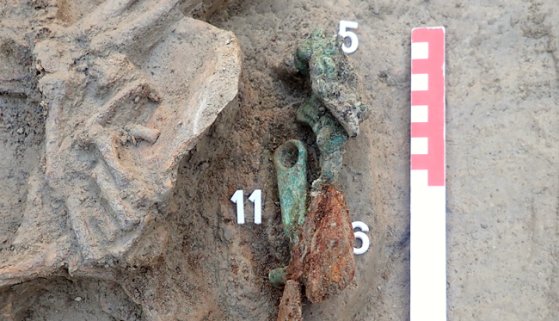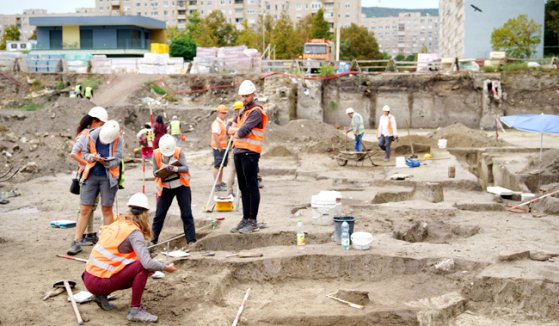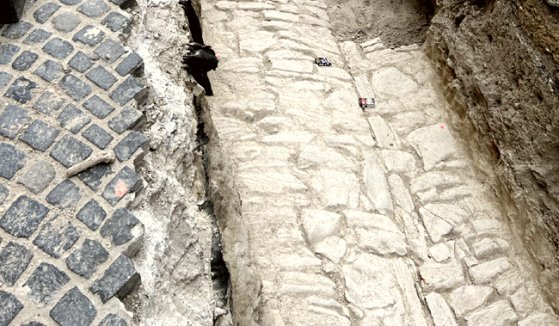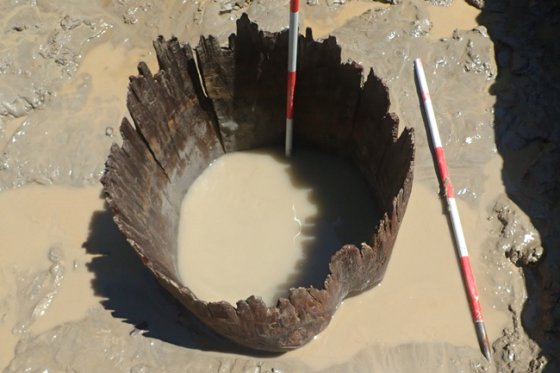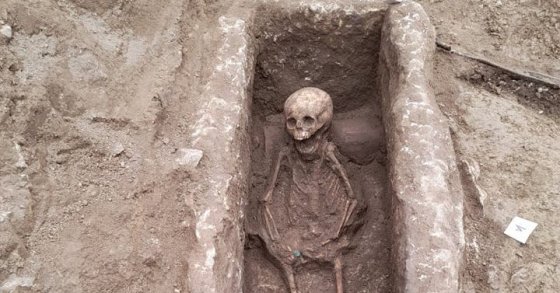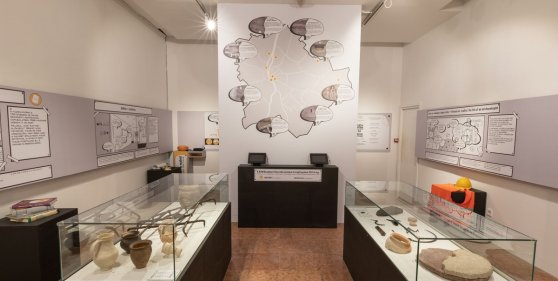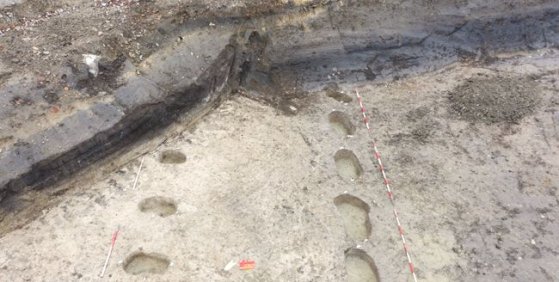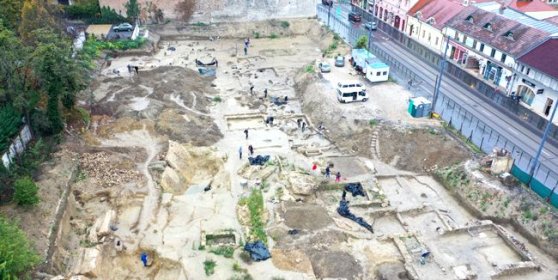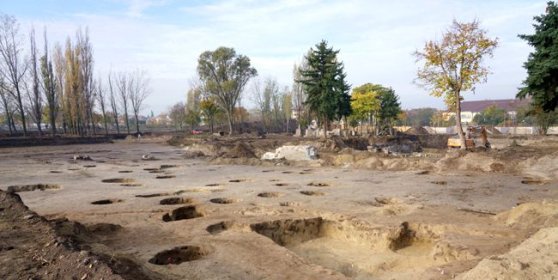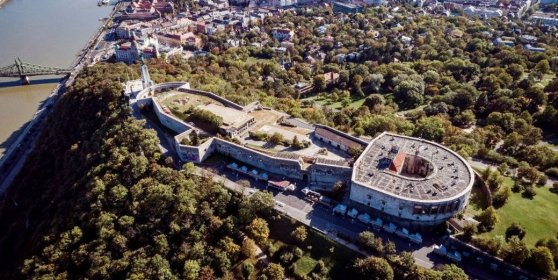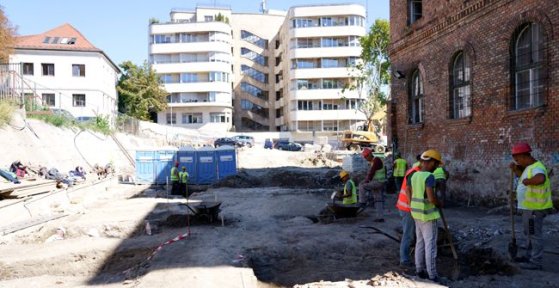 The „intertwined history” of the bridges and the city of Budapest
Which ideas and events have shaped the fate of bridges of Budapest and the cityscape? Alongside many other interesting facts, this question is also answered this newly published book by the Budapest City Archives, which introduces the history of bridges in Budapest.
The „intertwined history” of the bridges and the city of Budapest
Which ideas and events have shaped the fate of bridges of Budapest and the cityscape? Alongside many other interesting facts, this question is also answered this newly published book by the Budapest City Archives, which introduces the history of bridges in Budapest.
archaeology
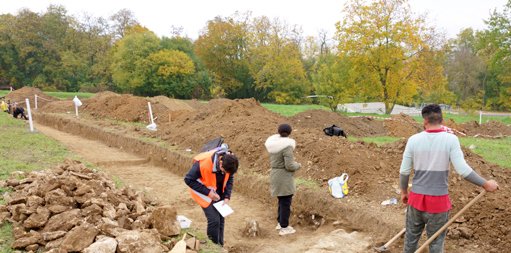 Archaeologists have researched a Roman villa built in the 4th century, from the last period of Aquincum
Archaeologists have researched a Roman villa built in the 4th century, from the last period of Aquincum
November 13, 2022 at 10:00 AM
Archaeologists have been researching a Roman-era villa and its surroundings in the 3rd District in Harsánylejtő in recent weeks. The building was built in the last period of the ancient Aquincum, in the 4th century. According to experts, the majority of the inhabitants of the civilian city had already moved into the walls of the military city, and the former villa area of Aquincum was inhabited by soldiers or nobles who could pay for military protection.
Archaeologists have found a previously unknown site at the border of Csillaghegy
October 20, 2022 at 12:30 PM
Archaeologists came across special finds in the 3rd District, in Pünkösdfürdő Street: prehistoric-, Roman-, migration- and Avar-era monuments were found in the same place. A 6th-7th-century grave was found here, in which the buried woman had a string of glass beads around her neck, a bronze ring on her temple, and a bronze ring on her right hand. Other valuable objects of use were also found on the site from several periods.
A drainage ditch system of Bronze Age origin was found in the area of Buszesz in Óbuda
October 3, 2022 at 6:30 PM
During the archaeological excavation in the area of the former distillery, Buszesz, a drainage protection structure of prehistoric origin was identified under the Roman layers in Óbuda. The ditch system ensured flood protection. Pile holes, storage and waste pits belonging to former buildings were also found.
Archaeologists have found the road of the Buda Castle from Sigismund-era
September 2, 2022 at 6:00 PM
A large section of a road from the time of Sigismund of Luxembourg, dating from the beginning of the 15th century, was excavated by the staff of the Budapest History Museum at the Buda Castle, in the area below the Savoy Terrace. Medieval and early modern layers can also be observed on the excavated road section.
Archaeologists found a 7,000-year-old wood-lined well at Budafoki road
August 12, 2022 at 5:00 PM
During the excavation at Budafoki road in the 11th district, the archaeologists uncovered a seven-thousand-year-old well, which was created from the hollowed-out trunk of a large tree. Previously, details of a Neolithic and an Árpád-era settlement came to light in the area.
Archaeologists unearth remains of Roman child during dig near Bécsi Road
April 18, 2021 at 2:00 PM
A grave from the late Roman era has been excavated on a construction site near Kolosy Square in Óbuda, in the former cemetery of the Military City Aquincum. The tomb housed the remains of a small child who was once buried with pots and coins, and a headrest made of tiles was placed under his head.
The story of four hundred graves – Archaeological excavation on Margit Boulevard comes to an end
March 5, 2021 at 6:00 PM
The excavation on a plot at the corner of Margit Boulevard and Rómer Flóris Street has been completed. Archaeologists uncovered many Bronze Age and Roman items and artefacts from the Ottoman Period, as well as four hundred graves.
New exhibition about the Middle Ages opens in the Castle Museum
January 17, 2021 at 5:00 PM
The Vármúzeum ('Castle Museum') of the Budapest History Museum has created the fifth exhibition that places the finds of mediaeval archaeology from the past year in the spotlight. While the physical exhibition does exist. Currently, visits are limited to virtual tours.
Further sections of ancient settlements found along Rákos Stream
January 8, 2021 at 9:00 AM
Archaeologists have found traces of wooden houses from the late Bronze Age, built 3300 years ago, in the 14th district. Wooden remains, ceramic artefacts and a pendant have been unearthed during the excavation.
Exciting artefacts found in cemetery of Roman military encampment
December 21, 2020 at 2:00 PM
Bird rattles, curse tablets, glass jars and jewellery have been unearthed during at an excavation in Óbuda, near Bécsi Road, in the cemetery of the Roman-era Military town of Aquincum.
Archaeologists uncover Sarmatian ruins in Zugló
November 28, 2020 at 2:00 PM
A Sarmatian settlement from the 2nd–3rd centuries is being excavated near Rákos Stream in the 14th District. Dugout homes, water pits, roman ceramic, glass and metal artefacts have been found.
Ruins of observatory found on Gellért hill
November 25, 2020 at 1:00 PM
Archaeological excavations are happening in preparation of the renovation of the Citadel. Around the fortification, the ruins of the observatory that once stood on Gellért Hill but was destroyed in 1867 have been found. The dig team has also confirmed the find of a First World War gun carriage, Celtic, Roman, and Ottoman Turkish coins. The renovation of the courtyard is set to begin soon, accompanied by the restoration on the outer walls.
Graves from the Ottman-era and medieval walls found on Margit Boulevard
September 21, 2020 at 6:00 PM
A cemetery from the Ottoman-era has been found during excavation under 19–21 Margit Boulevard. Archaeologists are now searching for the walls of the houses of Felhévíz.
More articles
 The „intertwined history” of the bridges and the city of Budapest
Which ideas and events have shaped the fate of bridges of Budapest and the cityscape? Alongside many other interesting facts, this question is also answered this newly published book by the Budapest City Archives, which introduces the history of bridges in Budapest.
The „intertwined history” of the bridges and the city of Budapest
Which ideas and events have shaped the fate of bridges of Budapest and the cityscape? Alongside many other interesting facts, this question is also answered this newly published book by the Budapest City Archives, which introduces the history of bridges in Budapest.
 The Bridge Report, which brought a turning point in the history of Budapest
A travel report that changed the history of Pest and Buda, as well as Hungary. The little book contributed to the change of half a thousand years of legal customs and the implementation of an investment of unprecedented size and technical quality. This book was The Bridge Report [Hídjelentés in Hungarian].
The Bridge Report, which brought a turning point in the history of Budapest
A travel report that changed the history of Pest and Buda, as well as Hungary. The little book contributed to the change of half a thousand years of legal customs and the implementation of an investment of unprecedented size and technical quality. This book was The Bridge Report [Hídjelentés in Hungarian].
 Drama on the university wall - The heroic monument was planned 95 years ago
In the constant hustle and bustle of the Egyetem Square in Pest, the students may not even notice the monument that decorates the short section of wall between the church and the central building of ELTE. However, it commemorates their predecessors, the heroes who fought for their country in World War I, and those who heroically helped them. The first design of the dramatically collapsing soldier was born in 1928, ninety-five years ago.
Drama on the university wall - The heroic monument was planned 95 years ago
In the constant hustle and bustle of the Egyetem Square in Pest, the students may not even notice the monument that decorates the short section of wall between the church and the central building of ELTE. However, it commemorates their predecessors, the heroes who fought for their country in World War I, and those who heroically helped them. The first design of the dramatically collapsing soldier was born in 1928, ninety-five years ago.

